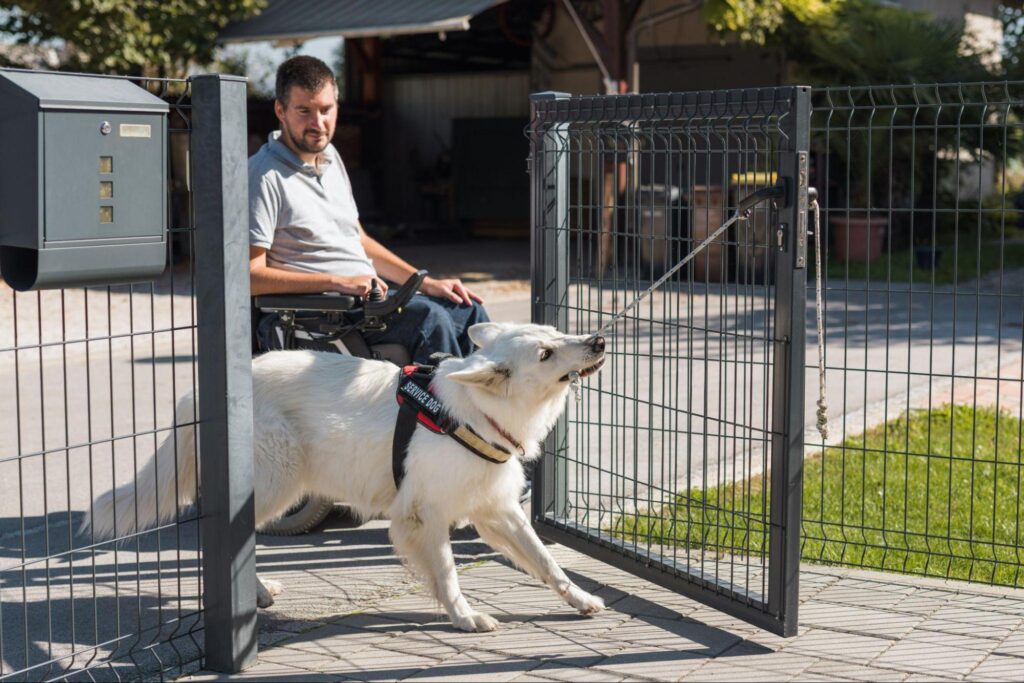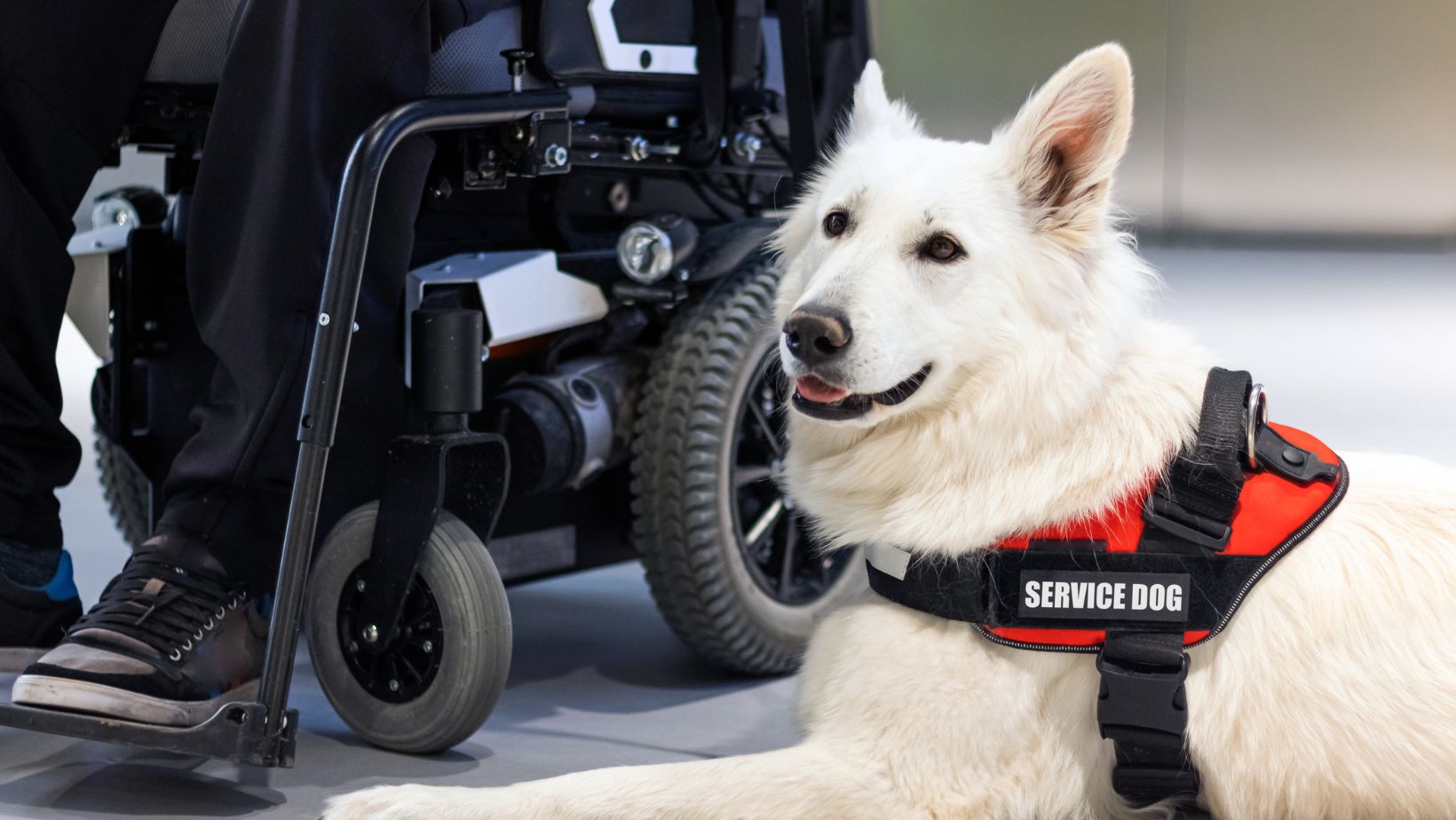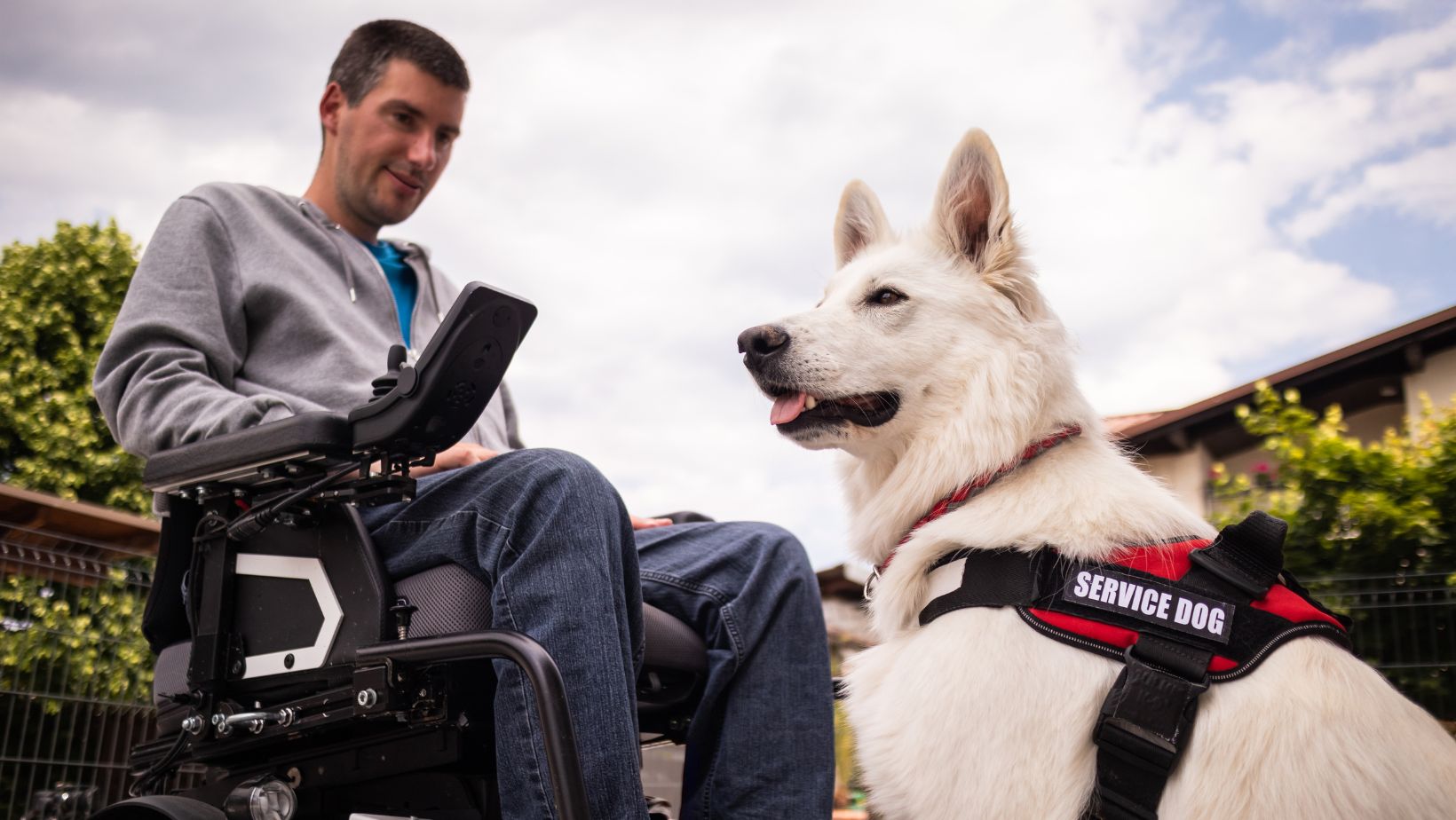
Service dogs serve as a lifeline for many people with debilitating disabilities. By performing trained tasks, they help their handlers overcome day-to-day obstacles, gain more independence, and feel at ease no matter their environment. Not only that, but they also offer companionship, unconditional love, and security — all of which can drastically improve emotional well-being.
If you have a diagnosed disability and are considering a service dog as part of your treatment plan, you likely have a lot of questions about how to obtain one and whether you actually need a service dog letter. Below, we’ll explain everything you need to know and clear up some common misconceptions.
What Is a Service Dog?
A service dog is a working dog that has been specifically trained to perform tasks that mitigate symptoms of a disability. These tasks can vary depending on the individual needs of the handler, though they all share one thing in common: They provide relief from symptoms and allow the individual to experience a better quality of life.
A service dog is protected under several federal and state laws in the US because of their invaluable role. These laws are in place to ensure that the service dog is always able to assist their handler, regardless of the situation or their whereabouts.

Federal laws that protect service dogs include the Americans with Disabilities Act (ADA), the Fair Housing Act (FHA), and the Air Carriers Access Act (ACAA). Any dog can become legally recognized as a service dog, no matter their breed, size, or age.
What Tasks Does a Service Dog Perform?
As we touched on earlier, the service dog’s trained tasks ultimately depend on their handler’s disability and circumstances. An individual with mobility issues, for instance, would benefit from tasks such as wheelchair pulling, obstacle guidance, and balance assistance, while those with anxiety disorders may instead benefit from tasks such as deep pressure therapy and tactile stimulation.
Under the ADA, a service dog only needs to perform one symptom-relieving task to be officially considered a working animal. However, many service dogs do perform several tasks.
How Do I Qualify for a Service Dog?
To qualify for a service dog, you must have a disability that affects at least one major aspect of your life, such as your ability to work, get dressed, travel, socialize, or exercise. The disability must have been also officially diagnosed by a licensed healthcare provider and can be physical, mental, or emotional.
Do I Need a Service Dog Letter?
A common misconception is that those with disabilities must officially register their service dogs and obtain documentation to be entitled to their legal rights. However, in the US, there is no legal requirement for service dogs to be registered, nor is there an official “service dog letter” documentation.
The ADA clearly outlines the following: “Mandatory registration of service animals is not permissible under the ADA,” and “state/local governments can’t require certification or registration.” However, service dogs are subjected to the same licensing and vaccination rules that are applied to all dogs in your state.
While service dogs don’t require a letter, you can still be denied your legal rights in certain circumstances. For example, a service dog can be asked to leave the premises of a building if they behave unruly or endanger the safety of others. That’s why it’s so important to make sure your service dog also has impeccable obedience and public access skills.
Be mindful that another type of therapeutic animal, known as an emotional support animal (ESA), does require a letter. However, they perform a different role and receive different legal protections. Below, we’ll briefly explain the difference between emotional support animals and service animals. You may find that an ESA is better suited to your needs than a service animal if you do not require symptom-relieving tasks.
What Is an Emotional Support Animal?
An emotional support animal is another type of animal companion that provides therapeutic relief to the lives of people with emotional or mental disabilities. Compared to service animals who assist through trained tasks, ESAs solely assist through their comfort, presence, and affection.

ESAs are not required to undergo training and are generally regarded as pets under most laws. They are protected under the Fair Housing Act and are entitled to housing protections, such as exemption from no-pet policies and pet fees in most rental properties. However, you must have a valid ESA letter to qualify for these privileges.
What Is an ESA Letter?
An ESA letter is a piece of documentation that states you have a diagnosed disability and an ESA has been prescribed as part of your treatment plan. You can obtain an ESA letter from a licensed mental healthcare professional (LMHP), provided you meet the eligibility criteria and attend an ESA assessment.
Some states may require you to have at least a 30-day client-provider relationship before an ESA letter can be prescribed, so be sure to familiarize yourself with your state’s specific laws.
Next Steps: Getting a Service Dog
If you’re still considering a service dog, the next step is to get in touch with a healthcare provider or service dog charity in your area. They can help you determine your eligibility, guide you through the process, and make you aware of any state-specific legislation in place.
A charity can also provide you with a trained service dog, though you can also train a service dog yourself if you have the means to.












